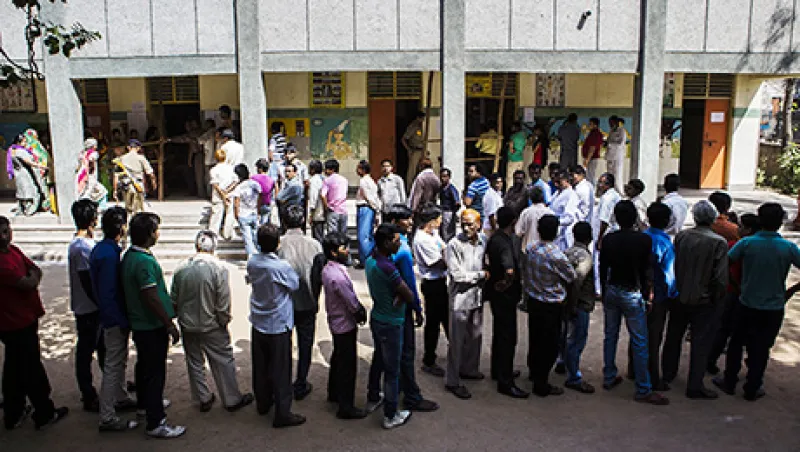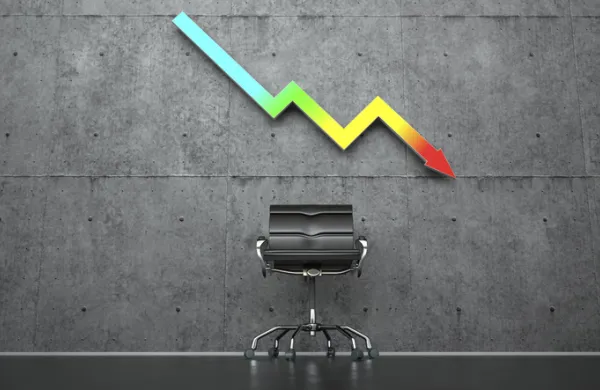As analysts and observers have predicted for months, Narendra Modi and his business-friendly, Hindu nationalist Bharatiya Janata Party are headed for sweeping victory in India’s national elections. As of early Friday evening India time, the BJP was leading or had won 282 of the 543 seats in the Lok Sabha, the lower house of India’s parliament. If the results hold, this would be the first time since 1989 that a party in India will have the magic number of 272 seats to control a government outright, rather than having to form a coalition.
The Bombay Stock Exchange’s benchmark SENSEX index has rallied on the back of the election results, hitting an all-time high during trading of 25,375.63, retreating somewhat by market close to 24,121.74 points on Friday, finishing an already record-breaking week bolstered on anticipation of a Modi win. Even if final results show a BJP win not quite as dramatic as early returns suggest, investment analysts see a more sanguine economy under a BJP-led coalition government.
The Indian economy remains sluggish, despite some signs of renewed strength over the past year and a series of reforms and regulations proposed by the government of Prime Minister Manmohan Singh. “The fact that opinion polls have historically been wrong, the real economy is on its knees and investors seem undecided only raises the stakes,” says Aditya Narain, managing director and India strategist of Citigroup Global Markets in Mumbai.
Most of the opinion polls conducted between December 2013 and February 2014 projected that the BJP-led National Democratic Alliance (NDA) would win between 211 and 236 seats, and the United Progressive Alliance (UPA) between 92 and 139 seats. In March two polls estimated the NDA tally at 230 to 246, and the last opinion poll before the elections commenced predicted the NDA crossing the threshold with 275 seats. Friday's results show the NDA poised to win 336 seats.
Elections always carry an element of surprise, but in India several factors heightened the uncertainty. Voting trends on the subcontinent depend on several variables: anti-incumbency, caste, religion and regional or socioeconomic conditions. Rural voters have different priorities from those of the urban electorate. Of India’s electorate of 814 million, fully 150 million were eligible to vote for the first time. The actual turnout was 540 million.
Prior to the release of the election results, Jyotivardhan Jaipuria, managing director and head of research at Bank of America Merrill Lynch in Mumbai, outlined two likely broad scenarios: a government in which the leading party controls at least 150 seats with support from two to five smaller, regional parties; or a more fragmented coalition of smaller parties that join forces after the election. Jaipuria says that a coalition in which one party has a majority or plurality of Lok Sabha seats would bolster the confidence of India’s business sector, which would have a knock-on effect on India’s gross domestic product. This, as well as other factors such as a stabilized rupee, falling interest rates and international economic expansion, according to Jaipuria, would translate into GDP growth of 5.4 percent and 6.5 percent for the 12-month period ended March 2015 and March 2016, respectively.
In case of one party gaining at least 260 seats, Chetan Ahya, managing director of Morgan Stanley in Mumbai, expects a sharp recovery in GDP during fiscal year 2016, to 6.5 to 7.25 percent, along with sharp deceleration in inflation on the back of higher productivity (see chart).
Morgan Stanley scenarios
| GDP growth (%) | Broad market Earnings growth (%) | |||
| FY15 | FY16 | FY15 | FY16 | |
| Scenario 1: An absolute majority for one of the large parties (i.e., 260+ seats) | 5.5-6 | 6.5-7.25 | 12 | 25 |
| Scenario 2: 220-230 seats for one of the two major coalitions | 5.5-6 | 6.25-6.75 | 10 | 16 |
| Scenario 3: A more fragmented coalition with the lead party winning circa 180 seats | 5-5.5 | 6-6.5 | 7 | 12 |
| Scenario 4: A broad fragmented coalition with participation of a lead party only in a supporting role | 4.75-5 | 5-5.5 | 3 | 5 |
| Source: Morgan Stanley | ||||
In India the anticipation of change, as much as the reforms themselves, may be a market catalyst. “Markets are likely discounting a stable coalition,” says BofA Merrill Lynch's Jaipuria. “However, we still see a 5 to 10 percent rally in the next few months as reform expectations build up. In case of a shock result, we see a 15 to 20 percent correction in the market as hopes of an early revival in the economy are dashed.”
Get more on emerging markets.






